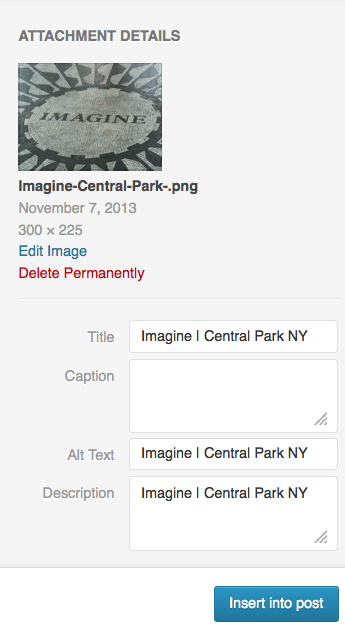I really enjoyed the recent post by Amy Balliett 3 Tips to Plan Your SEO Campaign for The Visual Web, which made me think that maybe you would like to know how to optimize your images within WordPress.
 To begin, save your image with a name, not a ridiculous string of numbers. Best Practice shared by: Kenneth Neilson The best thing you can do is allways use lowercases and to use dashes (NOT underscores) between the words. The best name for your picture is: sushi-platter-turks-seafood.jpg
To begin, save your image with a name, not a ridiculous string of numbers. Best Practice shared by: Kenneth Neilson The best thing you can do is allways use lowercases and to use dashes (NOT underscores) between the words. The best name for your picture is: sushi-platter-turks-seafood.jpg
Then within WordPress, complete all of your search engine fields:
- Title - Tell what the photo is about and if applicable add a geographic location.
- Alt Text - This is very important, Google sees this + the visually impaired will get this text read to them.
- Caption - I actually don't like captions, but Dave Ellison shared this in the comments and I think it is super valuable "people tend to view images first and their behavior makes their line of sight drop to the bottom of the image. I've found that people will scan photos and read captions before they will read content. So for some folks, they may get a better idea of what is contained in your content more quickly with captions.
I have also read in several articles that images get indexed in 'Google images' more readily with captions. Not sure that's true or how it might affect SEO but it's interesting."
- Description - Complete this for your own organization, it won't help your seo.
Other Image SEO Tips:
- Make sure the on page content relates to the image.
- Mix up your image keywords - you don't want to continuously use the same words.
With Google alone getting billions of searches each month it is important to pull out all the stops to get ranked for your target keywords. You may have trouble competing in the regular organic listings, but you could potentially rank well in image searches if you take an extra moment to optimize your photos.
